Looking back, I realize this was a bit over the top.
I’ve been wanting to blog this story, but a lot of time has gone by and it’s a bit stale in my mind. It is something I want to journalize so I can remember it in years to come. Since that’s mostly what this blog is about, and because a Twitter friend showed some interest in reading it, here it is.
It was April and I was planning to spend a few days down in our Phoenix apartment. I’d already paid for my monthly hangar rental down at Deer Valley Airport (DVT) and figured I’d fly the helicopter down and put it in the hangar in case I got any calls for flights while I was down there.
My faithful Toyota was sitting in the airport parking lot, waiting for me. A true “airport car,” I left it there so I’d have something to drive when I flew in. My to do list for the upcoming month included driving it home and stowing it for the summer, when it wasn’t needed. (No sense in letting the poor thing rot out in the sun.)
I pulled the helicopter out of my Wickenburg hangar with a golf cart I have just for that purpose and parked it on the ramp. I unhooked the tow gear and disconnected the ground handling wheels. I put the golf cart and tow bar away. I parked my Jeep in the hangar, too, and locked it all up. I was good to go.
I did my preflight and climbed on board. A few minutes later, the engine was running and the blades were spinning.
And then my Aux Fuel light came on. The circuit breaker had popped out.
Let me take a moment to explain what this means. A Robinson R44 Raven II is fuel injected. It has two fuel pumps. One is the engine-driven pump which is the primarily means of feeding the engine when the engine is running. The other is the auxiliary fuel pump, an electric pump that’s used to prime the engine and as a back up in the unlikely event that the engine-driven pump fails. It’s a secondary system. If it fails in flight, the helicopter will continue to run.
I have a history with Zero-Mike-Lima’s auxiliary fuel pump dating back to the day after I picked it up at the factory. Back then, I educated myself about the system to troubleshoot a popping circuit breaker problem. My thorough knowledge of the fuel system helped me out on an FAA check ride 2 years later when the circuit breaker popped again. I got the fuel pump replaced right after that incident, when the helicopter was only two years old.
The fuel pump had begun giving me problems a few weeks before — but I didn’t recognize it, at first, as a problem. Circuit breaker had popped during a tour in the Phoenix area. I (incorrectly, it appears) assumed that the front seat passenger had knocked the circuit breaker out with her sandals. Okay, so it was a stupid assumption, but since it didn’t pop again when I pushed it back in, what else could I assume?
On another flight a week or so later, it happened again. That’s when I realized the pump was acting up again and would likely need replacement soon. Fortunately, I still had the old one. I did some checking around and learned that the manufacturer could rebuild it for about 60% of the cost of a new one. Since saving $600 on a like-new part sounded like a good idea to me, I sent it off to be rebuilt and kept my eye on the situation.
Well, the situation came to a head that day on the ramp at Wickenburg. As I sat there, blades spinning, looking at that warning light, a few thoughts went through my mind:
- If I flew down to Deer Valley, there was no one there to fix the fuel pump. If it completely failed, the helicopter would be stuck there.
- If I left the helicopter in Wickenburg, my mechanic there could replace the fuel pump when the rebuilt one arrived. After all, he’d replaced the last one.
- I really didn’t want to drive down to Phoenix. I already had a car there and my husband, Mike, already had two cars down there. Besides, it was a long drive.
I knew what I should do. I cut the throttle, flicked the Clutch switch off, and shut down.
While I was doing this, a helicopter flew in to the airport and landed at the fuel island. It was a MD helicopter that looked like a 500. I didn’t know who it belonged to, so it wasn’t someone local. That meant when the pilot was done fueling, he’d likely leave. It was late in the day. Maybe he’d go home. He was flying a helicopter. There are lots of helicopters based at Scottsdale, which is near Deer Valley. Maybe Deer Valley was on the way home for him. Maybe he could drop me off.
This gives you an idea of the way I think. I have a problem, I immediately consider all kinds of options — including wacky ones — as a solution.
Could I ask a perfect stranger to fly me to Deer Valley Airport in his helicopter?
Nah.
My blades slowed to a stop. I got out and looked at that helicopter by the fuel island.
Why not?
I walked over to the pilot, who was now out, messing with the hose. He was about my age — maybe a bit older — and looked friendly and easy-going in jeans and a casual shirt. He reminded me a bit of the two Hughes 500 pilots who lived in Wickenburg. Regular guys who just happened to own turbine helicopters.
After the usual, “Hi, how are you doing?” greeting, I asked, “Where are you based?”
“Stellar,” he replied. Stellar Air Park was a private residential/commercial airport in Chandler, south of Phoenix. Wickenburg was north of Phoenix. This was looking promising.
“You’re not going home from here, are you?”
“Well, I was just out tooling around the desert. Why? What do you need?”
I explained my situation.
Before I could ask for a lift, he said “Sure, I can drop you off at Deer Valley.”
“That would be great. I just need to put the helicopter away.”
I hurried back to my hangar and fetched my tow gear. Ten minutes later, the helicopter and tow gear was all put away again and the hangar was locked. I left my Jeep parked on the ramp outside my hangar door. I got to the helicopter at the fuel island just as the pilot finished fueling.
We introduced ourselves and he told me to hop in.
I climbed on board. It really was a climb. 500s have long legs. I maneuvered into the passenger seat with the cyclic stick between my knees and stowed my small bag behind me. He climbed in the other side.
The aircraft’s panel looked brand new, with glass cockpit instrumentation. I said something idiotic like, “Great panel. Did you have it redone?”
“No. The helicopter is new.”
That’s when I realized it wasn’t the same model as the Hughes 500s my friends flew. Theirs dated from the 1970s.
“It’s not a 500?” I asked.
“No. It’s a 530.”
I sat back as he started up. First, the rapid click-click-click of the igniter. Then the woosh as the jet fuel lit. Then the familiar whine as the jet engine spun up and the blades picked up speed over our heads. If there’s one thing I like about turbine helicopters, it’s the sound of the engine startup and the smell of burning JetA.
The flight to Deer Valley was uneventful. We talked about mutual friends — he knew one of my Hughes 500 pilot friends in Wickenburg and had heard of the other. We talked about places to fly. He was also an airplane pilot and had already flown much of the state — and then some. There was no place new I could suggest.
He offered to let me fly but I turned him down.
He was smooth on the controls and had the same low-flying habit the rest of us desert explorers have. (Once we know where the wires are, it’s not uncommon for us to cruise just a couple hundred feet over the empty desert floor.) He told me he’d never flown into Deer Valley, so I filled him in on what I usually do and where I park. He came in from the north, crossed over the top as instructed by the tower, and set down on one of the two helipads in front of the terminal. I grabbed my bag from the back, thanked him several times, and climbed out. He lifted off just as I got to the terminal gate.
It wasn’t until later that I gave the whole thing some serious thought. Did this qualify as hitchhiking? If so, what would my mother say?
 This photo shows the trailer parked in the spot next to mine. It’s been here longer than me and I suspect it isn’t going anywhere soon.
This photo shows the trailer parked in the spot next to mine. It’s been here longer than me and I suspect it isn’t going anywhere soon.
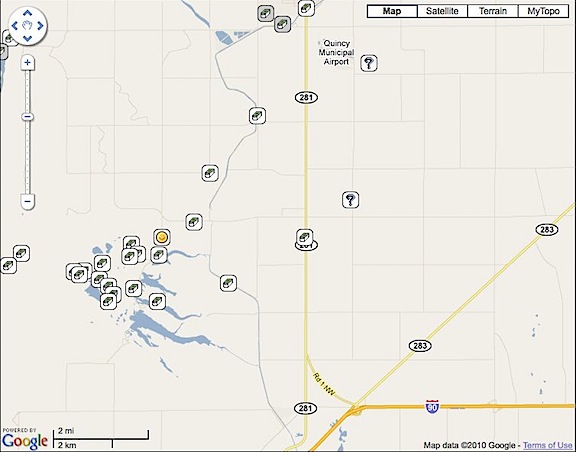
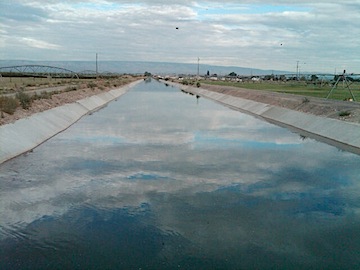
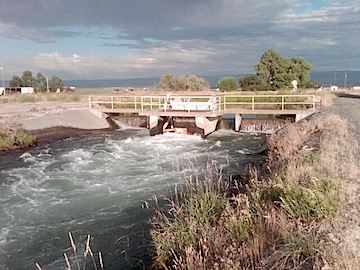
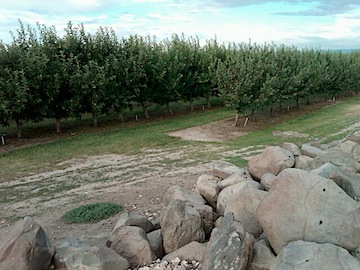
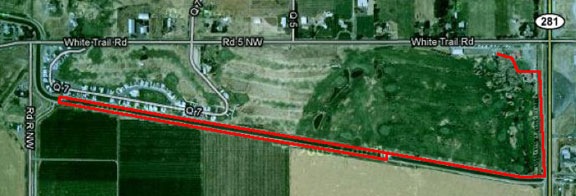
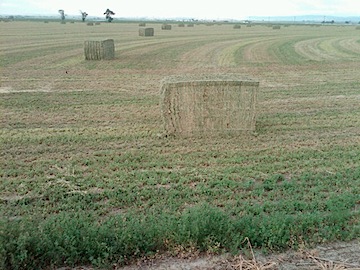
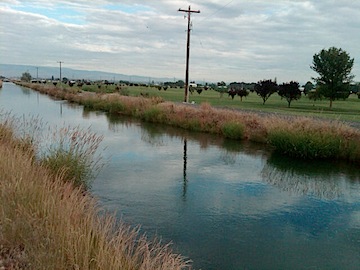

 Ten minutes later, he was pulling off the terminal connectors and cleaning them with his wire brush. (For the record, I also had a wire brush in my toolbox.) One connector had quite a bit of corrosion — it might have been the culprit all along — and needed to be replaced; he pulled a new one out of his truck and did the job. (Do you know anyone who keeps new terminal bolts for side battery connections handy? Can you say Maria is lucky?)
Ten minutes later, he was pulling off the terminal connectors and cleaning them with his wire brush. (For the record, I also had a wire brush in my toolbox.) One connector had quite a bit of corrosion — it might have been the culprit all along — and needed to be replaced; he pulled a new one out of his truck and did the job. (Do you know anyone who keeps new terminal bolts for side battery connections handy? Can you say Maria is lucky?) So when he was finished and I had everything put away, he followed me to the ag strip where the helicopter is parked. I had to do some interior reconfiguration — remove my helmet and the oil bottles under the front seat that I’m using for ballast, add headsets — and then we all climbed in. I took him and his wife for a 20-minute flight around the area that included downtown Quincy, Crescent Bar on the Columbia River,
So when he was finished and I had everything put away, he followed me to the ag strip where the helicopter is parked. I had to do some interior reconfiguration — remove my helmet and the oil bottles under the front seat that I’m using for ballast, add headsets — and then we all climbed in. I took him and his wife for a 20-minute flight around the area that included downtown Quincy, Crescent Bar on the Columbia River,